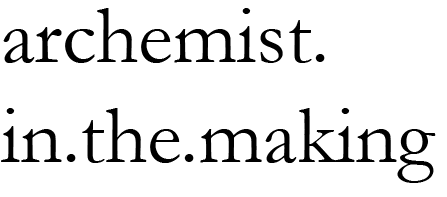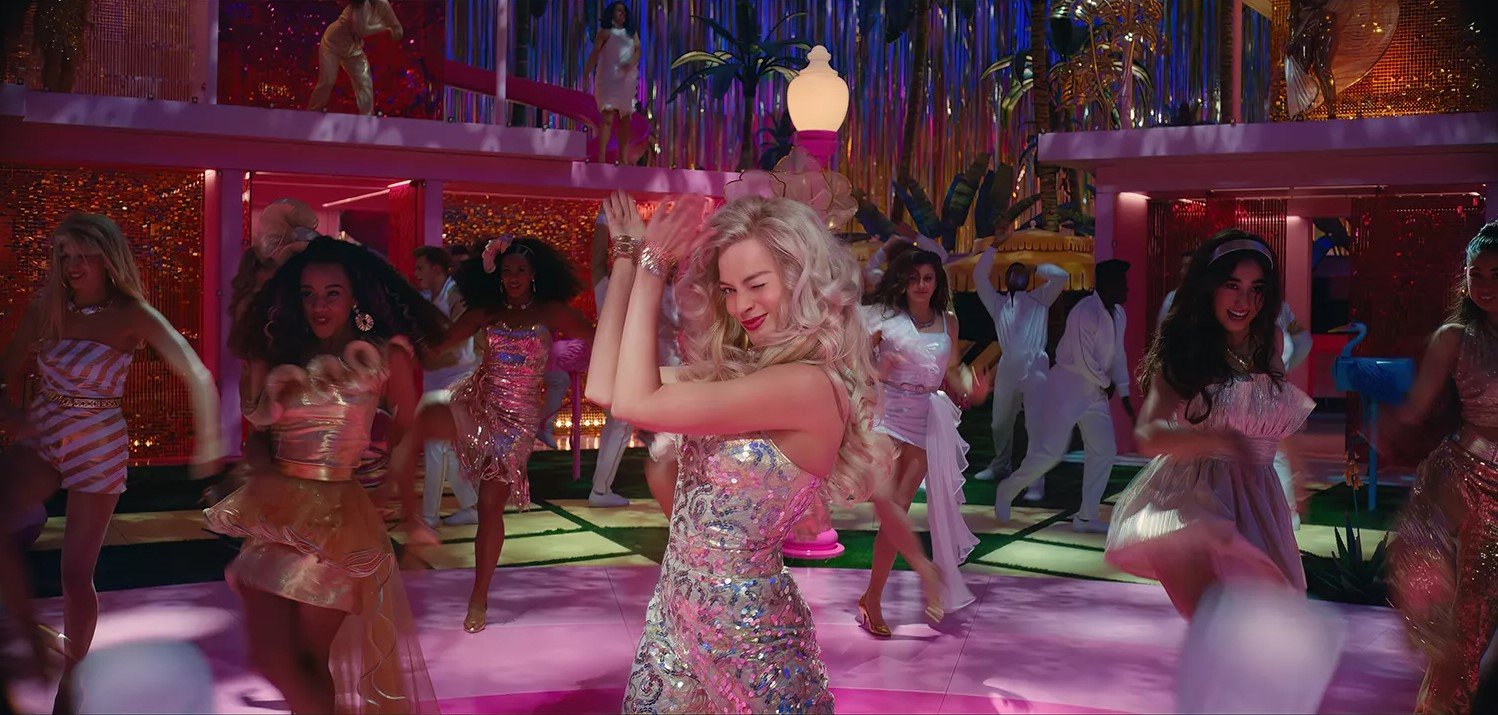*Disclaimer - Spoilers ahead, read at your own discretion!
Last week, eyes coated in hot pink and armed with three Barbies and one Ken, I became a part of the pink-cladded audience to watch Greta Gerwig’s highly anticipated. After all the intense marketing from the franchise that included Architectural Digest’s coverage of the captivating Barbie set to the two hundred plus Barbie Pink collaborated everyday products – I was anticipating that this movie would rewrite Barbie’s political rhetoric that has continually evolved.
After a glimpse into the production set, decked in gradients of pink (even the ‘white’ perceived in the movie was the lightest shade of pink), I was expecting a sugary delight that would leave a fun experience. Sure, the first half of the film centres on Barbie in a heavily matriarchal world and the ‘plastic fantastic’ lifestyle (Aqua can have their last laugh on this one). However, the moment Barbie stepped into our world, my emotional connection was severed. I soon later found myself watching the film but with exhaustion.
We begin the film with a satirical introduction of Barbie’s entrance into the toy market – among girls whose only toy options are babies and household chores. The sepia tone evolved into a product placement-esque display of various career Barbies and how they were to present the solution to encourage or push for girls to pursue what they want. The simplistic approach paved a wry and sarcastic introduction for the audience to bask in the pink Barbie world we’ve seen many times in the movie campaign. Despite the rosiness of it all – cracks were evident through the introduction of Ken (wonderfully played by Ryan Gosling) and Helen Mirren’s narrator about Ken’s heavy co-dependence on stereotypical Barbie (joyfully portrayed by Margot Robbie). It’s also been made clear that our lead heroine is least interested in Ken’s devotion, increasing his need for validation and an inferiority complex that would sow the seed of discord as the plot progresses.
The turning point began when Barbie finds herself experiencing changes deemed as a horrifying phenomenon by other Barbies. Her feet become flat instead of fashionable, thoughts of mortality creeps in, and cellulite and stretchmarks mysteriously appeared. And so Barbie and Ken set off into our human world to find the girl who has telepathically projected these transformations into stereotypical Barbie to restore herself. The world that Barbie ventured into was heavily ladened with misogyny and sexism. These ranged from catcalling to the Mattel office, where the highest authority dictating Barbie’s fate were all men in suits. It was a great satire and somewhat funny for the first five minutes, but it was the introduction of Barbie’s supposed human owner Sasha (aptly played by Ariana Greenblatt) that became my emotional shutdown. When Barbie enthusiastically walks up to the group of teenagers, all but one girl (coincidentally an actress of Asian descent) who was immediately shunned for liking Barbie soured my relationship with the film. While I feel the condemning speech from Sasha about problems with Barbie (and heck just about almost every fashion toy in general) was quite valid, it felt like the film didn’t welcome anyone who likes and loves Barbies.
Unfortunately, from there, it became a film I observed with a crammed commentary on political and social issues. Ken’s increasing insecurity did a backflip when he learned about patriarchy, which he later used to flip the Barbie World. Meanwhile, Barbie reunites with Sasha and Gloria (played by powerhouse America Ferrera), taking them to an overturned Barbieland now known as Kendom. The drastic change became a mission to restore Barbieland to the way it was with female empowerment. In the background of it all – Mattel’s higher-ups rush to Barbieland to set things straight.
The combination of everything was very on the nose.
Having said that, I appreciate how Gerwig’s characterisation of Ken brilliantly highlights the issues between Barbieland and our world. How where taking one for granted is equally as damaging as forcing them to fit into a stereotype. While Ken’s change, demise, and growth proved to be a brilliant plotline, it unfortunately greatly overshadowed what I thought was the main message.
As someone who has followed Barbie’s rhetoric growing up (and still am), I expected Gerwig’s Barbie would somewhat celebrate how far the doll franchise has evolved. Ferrera’s monologue on women's politics perfectly summarises the main message – that despite being a toy, Barbie will never be enough because of her gender. Sure, I can understand that some might argue that the narrative set up for Ken is also needed to fuel the eventual dialogue. But, I’d challenge whether the latter was just as simple as being explained in a condemning speech is merely resolved with a monologue.
Before watching the film and writing this commentary, I looked forward to review the architecture and aesthetics of the film. I would tell you that the dedication and attention to detail in the set design and costuming were brilliant. The mentioning of all the iconic Barbies and her friends was perfect – and I could point out how they’ve portrayed the dolls’ movement and articulation well. The comparison between Barbie’s bubble-gummy world and our glum environment was a brilliant homage to the 1950s aesthetic and theatrics often used. I would also tell you that the costuming, going from being preppy in style to a more sophisticated styling demonstrated the emotional maturity Barbie developed as the film progressed. I would also tell you how the music and choreography again celebrated 1950’s Hollywood where musical numbers were equally as flashy and comical. However, from the overwhelming amount of focal points - the aesthetic soon became a grey backdrop instead.
As the movie is laced with politics, would the Barbie movie be more enjoyable if it was a television series instead? Perhaps it’s not having a didactic commentary made about Barbie and Mattel, but addressing these issues subtly and evenly paced in one to two episodes. Ken’s exposure to patriarchy on steroids can gradually build up through each episode for a dramatic two-part season finale. I believe I would more likely enjoy the show instead of feeling condemned for two hours.
With all being said – I still cried at the end of the film. Maybe it’s because of Barbie creator Ruth Handler’s words to Barbie that affirmed my love for the franchise. Or perhaps it’s seeing Barbie’s fears of the unknown as a perfect mirror of what it means to be human.
As Shameless podcast once covered about Barney used for discussions on cosmetic surgery, Barbie was an excellent prop in providing a societal commentary. And as for someone who has always looked towards Barbie as a form of escapism, being thrown into a heavily politically laden film has left me feeling hollow and downtrodden. As Peter Debruge’s review on Variety perfectly sums it up, Barbie was ‘an intellectual experience, not an emotional one, grounded largely in audience nostalgia’.
Related works: I Thought Architect Barbie Was Just A Barbie (2020)
References:
Debruge, Peter. 18, July 2023. “’Barbie’ Review: Margot Robbie and Ryan Gosling Compete for Control of High-Concept Living Doll Comedy’. Accessed Augst 7, 2023. https://variety.com/2023/film/reviews/barbie-review-margot-robbie-ryan-gosling-1235672349/
Andrews, Michelle; McDonald, Zara (Shameless Media Co.), “Omg, more like a MURDER SCENE”. February 22, 2023. Produced by Shameless Media, podcast, online audio, 50:28, https://open.spotify.com/episode/3Vt0rkfj67SnnLYO3247t4?si=1284fd6624164a5c
Architectural Digest, “Margot Robbie Takes You Inside The Barbie Dreamhouse | Architectural Digest”. YouTube Video, 7:24, published June, 17, 2023. https://www.youtube.com/watch?v=uKgaVlMN7IY&ab_channel=ArchitecturalDigest
This entry is written on the lands of the Wurundjeri Country of the Eastern Kulin Nation..

